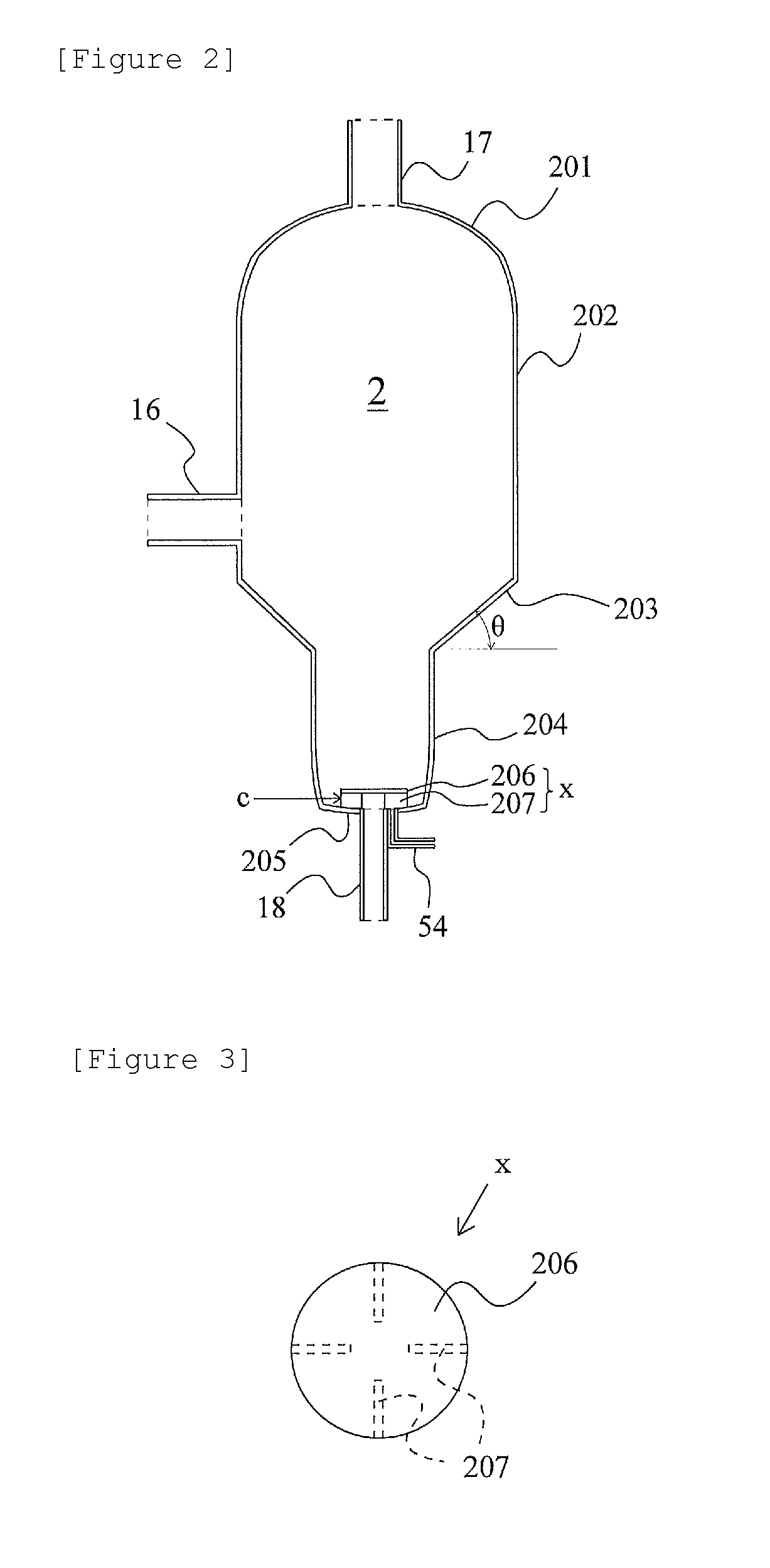Method for producing acetic acid
a technology of acetic acid and evaporator, which is applied in the direction of carboxylic preparation from carbon monoxide reaction, separation process, organic chemistry, etc., can solve the problem of easy precipitation of catalyst, achieve significant suppression of catalyst precipitation and accumulation in the evaporator, improve acetic acid productivity, and efficiently recycle
- Summary
- Abstract
- Description
- Claims
- Application Information
AI Technical Summary
Benefits of technology
Problems solved by technology
Method used
Image
Examples
example 1
[0078]An experiment was conducted in a bench plant based on the acetic acid production flow of FIG. 1. Methyl iodide, water, methyl acetate, acetic acid, lithium iodide, and a rhodium catalyst ([Rh(CO)2I2]−) were fed to the reaction vessel 1 at a total pressure of 2.8 MPa (gauge pressure) and 187° C., and methanol and carbon monoxide [reaction vessel CO partial pressure (absolute pressure): 1.2 MPa] were continuously reacted to isolate a reaction mixture liquid (7.9% by mass of methyl iodide, 2.6% by mass of water, 2.0% by mass of methyl acetate, acetic acid (balance), 13.9% by mass of lithium iodide, and 910 ppm by mass of the rhodium catalyst). The obtained reaction mixture liquid was flashed [pressure: 0.15 MPa (gauge pressure), temperature: 143° C.] in the evaporator 2 shown in FIG. 2. A vapor (volatile component) from the evaporator 2 was fed to the distillation column 3 and distilled to obtain crude acetic acid as the side stream 27. The components other than the crude acetic ...
example 2
[0082]The same experiment as in Example 1 was conducted except that in the evaporator 2, the θ was set to 45°, and the linear velocity r was set to 10 m / h. As a result, the average Rh precipitation rate for 100 hours was 0.15 g / h. After the 100-hour experiment, the evaporator 2 and the bottom fraction line were opened, and their insides were examined. As a result, the catalyst was not attached on the inside wall surface of the connection portion 203. However, precipitated Rh was attached on the piping interior from the bottom of the evaporator bottom part 205 to the catalyst circulation pump 57.
example 3
[0083]The same experiment as in Example 1 was conducted except that in the evaporator 2, the θ was set to 60°, and the linear velocity r was set to 10 m / h. As a result, the average Rh precipitation rate for 100 hours was 0.08 g / h. After the 100-hour experiment, the evaporator 2 and the bottom fraction line were opened, and their insides were examined. As a result, only a very small amount of the catalyst was attached on the inside wall surface of the connection portion 203 and the piping interior from the bottom of the evaporator bottom part 205 to the catalyst circulation pump 57.
PUM
| Property | Measurement | Unit |
|---|---|---|
| inclination angle | aaaaa | aaaaa |
| inclination angle | aaaaa | aaaaa |
| linear velocity | aaaaa | aaaaa |
Abstract
Description
Claims
Application Information
 Login to View More
Login to View More - R&D
- Intellectual Property
- Life Sciences
- Materials
- Tech Scout
- Unparalleled Data Quality
- Higher Quality Content
- 60% Fewer Hallucinations
Browse by: Latest US Patents, China's latest patents, Technical Efficacy Thesaurus, Application Domain, Technology Topic, Popular Technical Reports.
© 2025 PatSnap. All rights reserved.Legal|Privacy policy|Modern Slavery Act Transparency Statement|Sitemap|About US| Contact US: help@patsnap.com


